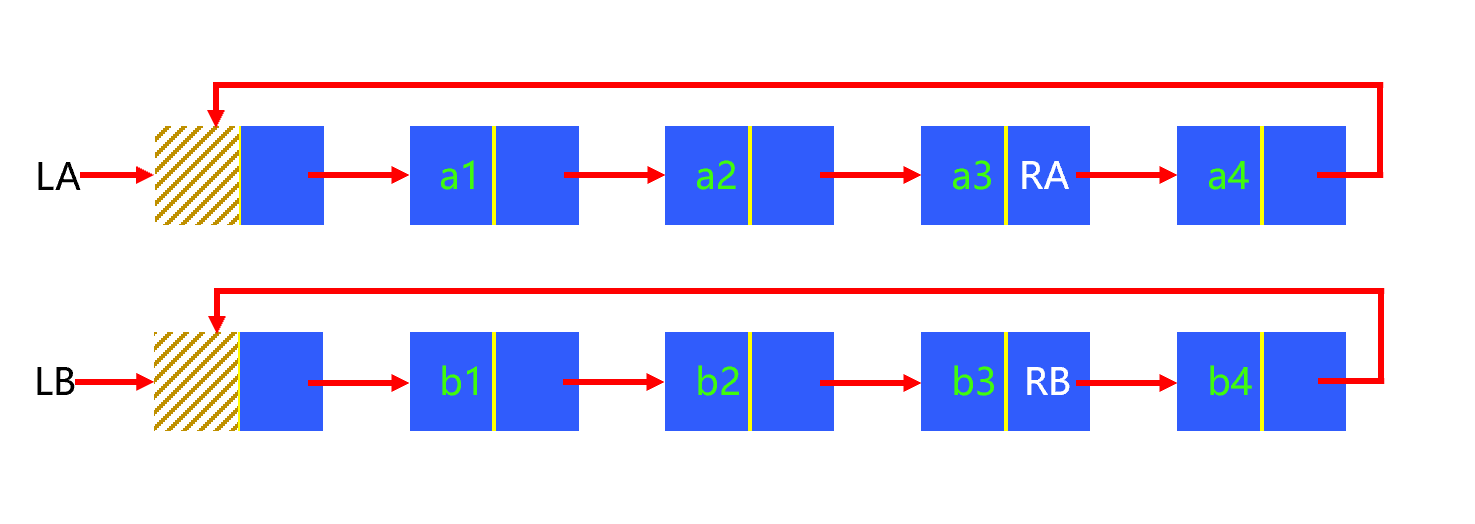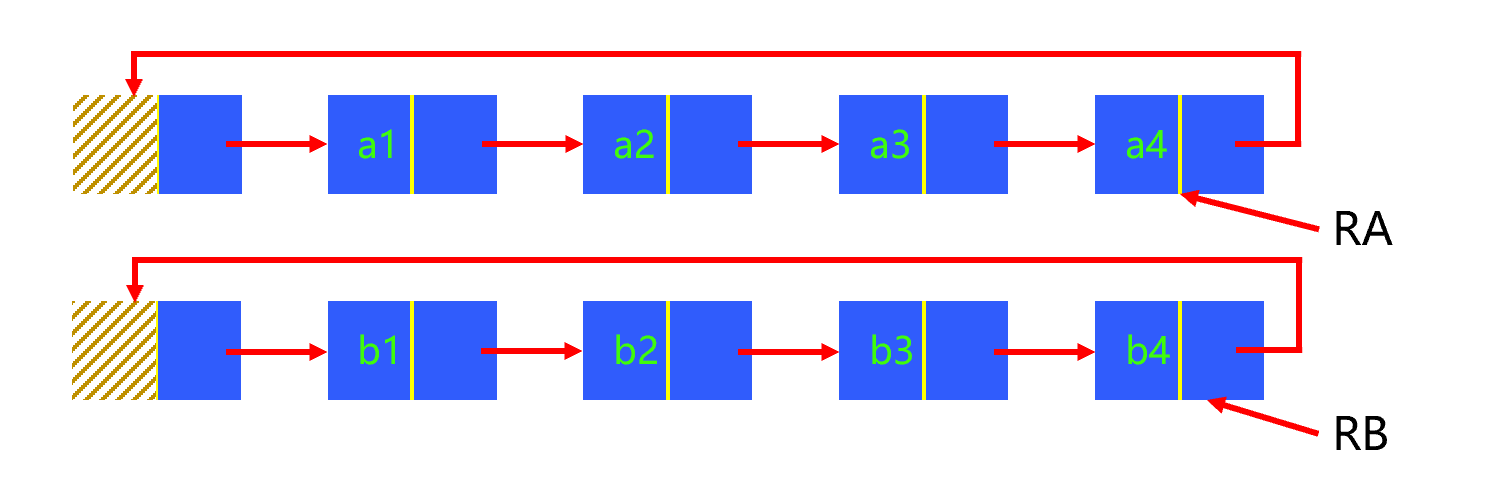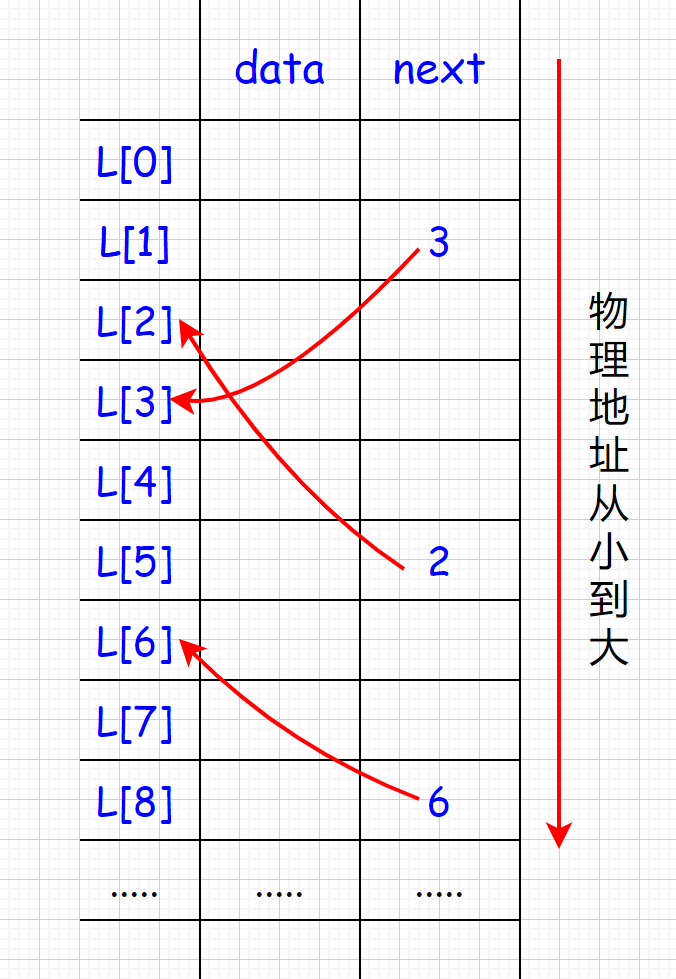循环链表

// 两个头指针为 LA,LB 的循环单链表合并为一个循环单链表
Linklist merge_1(Linklist LA,Linklist LB){
Linklist RA=LA;
Linklist RB=LB;
while(RA->next!=LA) RA=RA->next; // 此时 RA,RB 为尾指针 改变其 next 指向就可完成合并。
while(RB->next!=LB) RB=RB->next;
RA->next=LB->next;
RB->next=LA;
free(LB);
return LA;
}

// 两尾指针为 RA,RB 的循环单链表合并
Linklist Merge_2(Linklist RA,Linklist RB){
LInklist P=RA->next; // 预存
RA->next=RB->next->next;
free(RB->next);
RB->next=P;
return RB;
}
有尾指针很容易找到头指针,但是有头指针不是很方便找尾指针。
所以循环单链表一般习惯带尾指针。
双向链表
在单链表中,查找前驱节点不方便。
// 在每个节点里增加一个指向其前驱的指针域 prior
typedef int Datatype;
typedef struct node{
Datatype data;
struct node *prior,*next;
}Node,*Linklist;

创建
建立前驱关系
尾插
// r 是尾指针
r->next=pNew; // 建立后继关系
pNew->prior=r; // 建立前驱关系
r=pNew; // 更新 r
插入
前插操作
在P结点之前插入
p->prior->next=pNew;
p->prior=pNew;
pNew->prior=p->prior;
pNew->next=p;
删除
删除P指向的节点。
p->prior->next=p->next;
p->next->prior=p->prior;
free(p);
静态链表
有些语言并没有提供指针这种数据类型,想要使用链表结构,可以采用数组来模拟实现链表。
在这个数组里,物理上相邻的数据元素逻辑上并不一定相邻。
定义一个较大的数组作为节点空间的存储池。
# define Maxsize 10
typedef int Datatype;
typedef struct SNode{
Datatype data;
int next;
}Snode,StaticList[Maxsize+1];
// Staticlist代表的是 struct SNode [11] 类型, 数组中每个元素都是一个 struct SNode
StaticList L;
L[8].next=6 // 说明 后驱为 L[6]

静态链表中,还需要有一条连接各个空闲位置的链表,称为备用链表。
查找
// 以 body 为头节点的链表,查找 数值域为 elem 的节点在数组中的位置
int find_data(StaticList L,int body,char elem){
while(L[body].next){
if(L[body].data==elem){
return body;
}
body=L[body].next;
}
return -1; // 表示没找到
}
参考来源
静态链表